Once you start digging deeper into lawn care, you’ll hear terms such as scarifying vs dethatching. Depending on who you ask or what you read, you’ll probably get different explanations of these terms.
In the end, you’ll probably be more confused about the topic than you were before you started your research. So, what is the actual difference between scarifying and dethatching, and which should you use? Well, let’s find out.
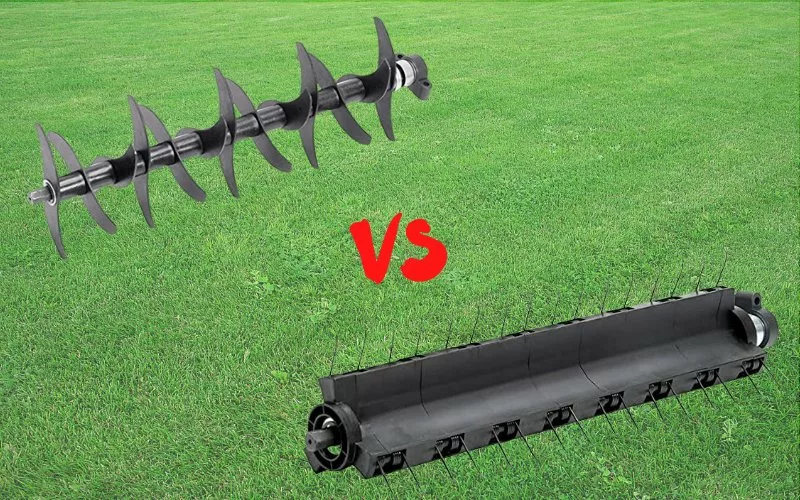
Scarifier vs Dethatcher (The Short Answer)
A dethatcher is any tool that can remove thatch from a lawn, hence its name. Dethatching can be achieved using tools such as rakes, power rakes, and even scarifiers. In other words, dethatching is a general term used to describe thatch removal.
Similarly, scarifying is a type of dethatching. However, scarifying is more aggressive than other dethatching methods like raking and is generally used when there’s more than ½ inch of thatch to remove.
| Scarifier | Dethatcher |
|---|---|
| Aggressive Dethatching | Light Dethatching |
| Metal Cutting Blades | Metal Tines |
| Cuts into the Thatch | Removes Surface Debris |
Scarifier Vs Dethatcher: A Closer Look
As you can see, these two processes, dethatching vs scarifying, are open to different opinions about what they actually refer to. Therefore let’s take a closer look at what each term means and how they apply to your lawn.
What is a Dethatcher?
A dethatcher technically refers to any tool that removes thatch from a lawn. So you would be right calling your scarifier a dethatcher.
But manufacturers such as GreenWorks, LawnMaster, and Sun Joe have taken the liberty of using the term dethatcher to describe a non-aggressive method using a rotary rake. In short, a dethatcher typically refers to a machine that will remove loose material from the top of the soil bed.
For example, a GreenWorks dethatcher uses metal tines similar to that of a spring rake to remove loose material. Now, is this actually thatch, or is this just organic material above the thatch?
Well, in my opinion, dead grass, clippings, and material such as moss and leaves are not thatch. They’re just organic material on top of the thatch.
So, a machine such as a LawnMaster or Sun Joe with a tines style dethatcher is really just a powered rake designed to remove loose material.
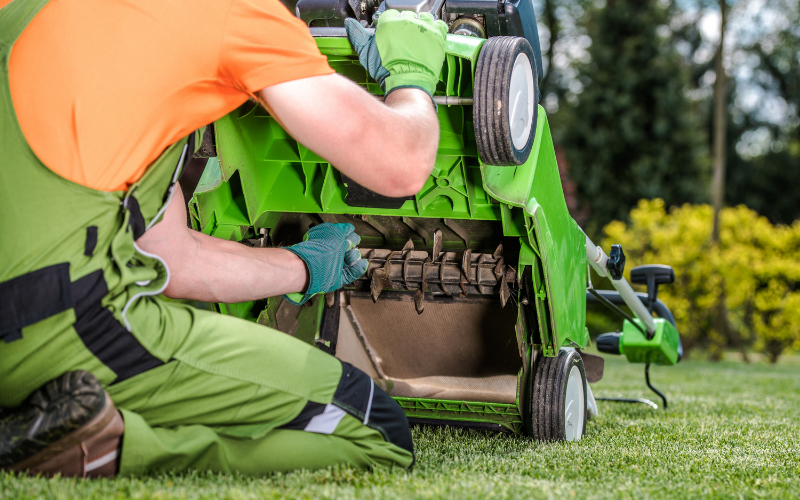
What is a Scarifier?
Using the same tools as a reference, the Sun Joe, GreenWorks, and LawnMaster come with two attachments: a dethatcher and a scarifier. So we know what the dethatcher looks like and what it does, but what about the scarifier?
Well, the scarifier is made up of a series of ridged cutting blades that typically extend an inch or two into the ground, depending on the unit’s height adjustment.
Unlike a dethatcher attachment, the scarifier cuts down into the actual thatch as the attachment rotates. This means you are dethatching in the true sense of the term and not just raking the surface of the ground.
As the blades rotate, they cut into the thatch, loosening the material and pulling it to the surface for collection.
The Main Difference Between the Scarifying and Dethatching Processes
In summary, the main difference between scarifying and dethatching in the eye of manufacturers is that scarifying is a more aggressive and effective method of dethatching than regular dethatching.
Ok, that doesn’t make a lot of sense, and you’re now starting to see where all the confusion comes from. Basically, the term dethatching isn’t used correctly.
So, think of lawn scarifier vs dethatcher as references to the attachments dethatching machines use, not what the actual term means.
In other words, scarifying is an attachment that cuts into the ground/thatch, and a dethatcher is an attachment that rakes the loose surface material on top of the thatch.
How to Know Which Tool You Should Use
Let’s say you have one of these types of tools that have both scarify and dethatch attachment options available. Which one will you choose, and how do you know which tool you should use? Let’s find out.
Scenarios in Which I’d Recommend a Scarifier
The real reason to use a scarifier is to reduce the thickness of the thatch. It’s that simple. As soon as your lawn has ½ inch or more of thatch, you’ll want to grab the scarifier and get to work.
Remember that you should only scarify during an appropriate time of year when your lawn is actively growing, say between late spring and early autumn.
Also, I’d suggest that you scarify at least once a year at a minimum. Now I make sure I scarify my lawn at least twice, if not three times per year, to keep the thatch to a minimum.
In summary, use a scarifier when your lawn’s thatch thickness exceeds ½ inch and make it part of your yearly lawn care maintenance.
When a Dethatcher Would Be the Better Choice
A dethatcher is a tool that reduces the amount of material accumulating on your lawn’s thatch layer. For example, organic material is added to the thatch layer every time you mow.
Therefore unless you remove this material regularly, the thatch will become thicker with new composting material.
To manage the buildup, you’ll want to use a dethatcher to remove as much of the new material as possible to keep the thatch below ½ inch.
Again you’ll want to limit dethatching to the growing season and try to dethatch at least once a year.
So, if your thatch is less than 1/2 inch, use a dethatcher; if the thatch is more than ½ inch, use a scarifier.
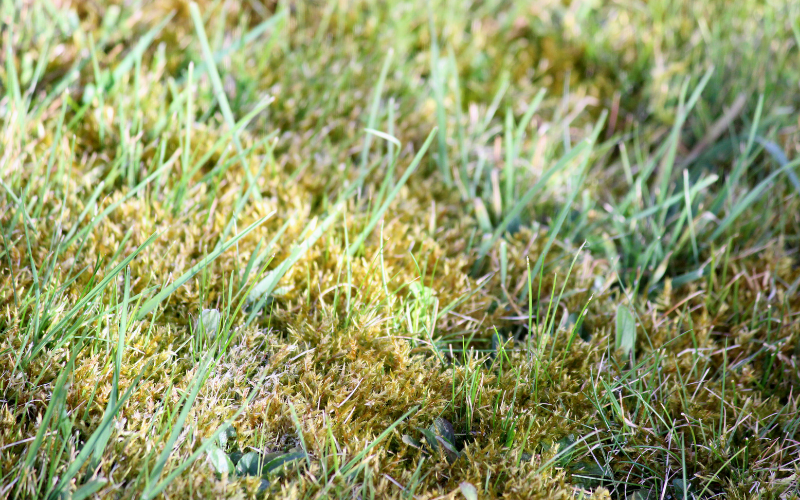
Steps to Take After Using a Scarifier vs Dethatcher (Do They Differ?)
Whether you choose to scarify vs dethatch, your lawn will look tattered regardless of the method. However, scarifying will look the worst of the two options as it’s the most aggressive.
Now the most important step after using a scarifier vs a dethatcher is to collect all of the thatch and debris your machine pulls up.
For this, you could use a dethatcher with a collection system, a garden rake, or a lawn mower with a bagger. The key is to remove as much of the material as possible so it doesn’t become part of the thatch again.
Once the thatch is collected, you want to let your lawn recover. Now this could take anywhere from a week or two to a month, depending on how aggressively you dethatched. Again this will depend on whether you dethatch vs scarify.
But either way, the aftercare steps are the same; the only difference is that scarifying will take longer to recover.
Finally, you’ll want to think about overseeding, fertilizing, and aerating your lawn. These extra lawn care steps will aid your lawn’s recovery and health.
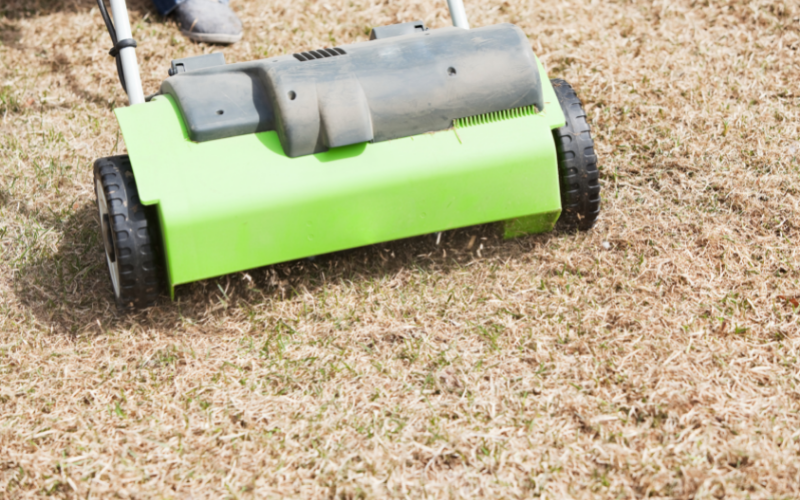
Common Misconception With Scarifiers vs Dethatchers
One misconception I hear and read a lot, whether on the internet, in conversation, or on the packaging of scarifiers and dethatchers, is that the process of dethatching achieves the same results as aerating.
Without digging too deep into the debate of dethatchers/scarifiers vs aerators, it’s easy to say that dethatchers don’t penetrate the ground nearly anywhere as deep as aerators do.
If you are lucky, a dethatcher/scarifier will dig down an inch or two. In contrast, an aerator will typically dig down three to six inches. So if you know how deep you want to aerate your lawn, you’ll know a dethatcher isn’t going to do the job.
Before you aerate your lawn, dethatch your yard to experience the full benefits of lawn aeration. You definitely don’t want to substitute aeration for scarifying or dethatching.

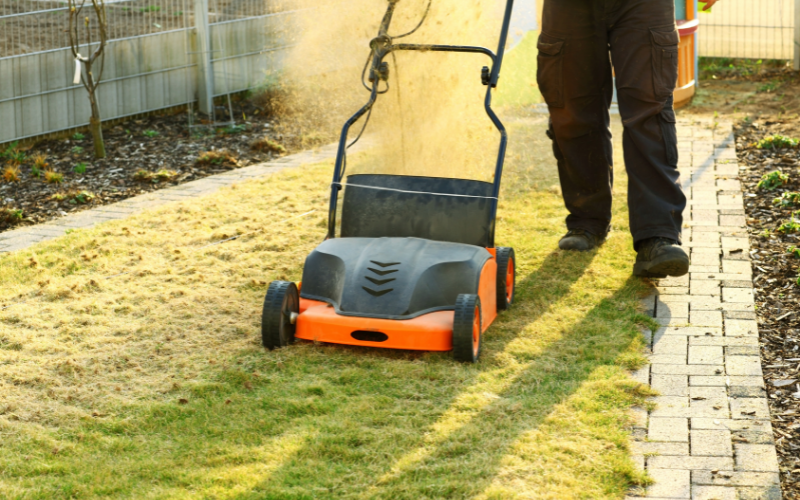

Great Article. Very helpful. You explained it well with the information I’ve needed to learn. I’ve just purchased the Sun Joe Dethatcher/Scarifier and now understand better how to use it. Thank you.
Glad it helped, Brian! Hope the new tool helps to improve/maintain the health of your lawn. Would love you to give us an update in a few months!
Thanks for the great article. Can you comment on the best approach if I’m planning to overseed the lawn? Will scarifying or dethatching do a better job of providing a good seed bed? Previously I’ve aerated before overseeding, but I have a feeling that one of these two methods will expose even more soil than the intermittent aeration plug holes.
Hi Peter! If your lawn is in pretty good shape then dethatching heavily should be good enough for overseeding. If your lawn has a considerable number of dead patches or “weak spots”, it may be worth going for scarification. Either way, you’re right that this should provide a better foothold for the seeds than the aeration plug holes. Hope this helps 🙂
Very helpful! Thank you.
You bet, Peter. Always happy to help if I can!
I mowed and scarified yesterday 10/29. I’m questioning after the fact that I shouldn’t have done it. I was told that doing before it snows would be good for the lawn…Thoughts?
Hi Mike,
Don’t worry, fall is a good time of year to scarify the lawn. Fall conditions create a warm and moist lawn, which is ideal for scarifying and leads to fast recovery. As long as the ground wasn’t too cold and hard, then your lawn should benefit from the scarifying.
If it was a bit late in the fall and it was already pretty cold, depending on where you live in the US, then it will probably take a bit longer for the grass to come back. If you’re having doubts because the lawn is now looking very bare, don’t worry. It should come back thick and healthy in the spring.
If you haven’t already done so, I suggest aerating and overseeding the lawn after scarifying to help it recover.
Hope this helps 🙂
Tom.